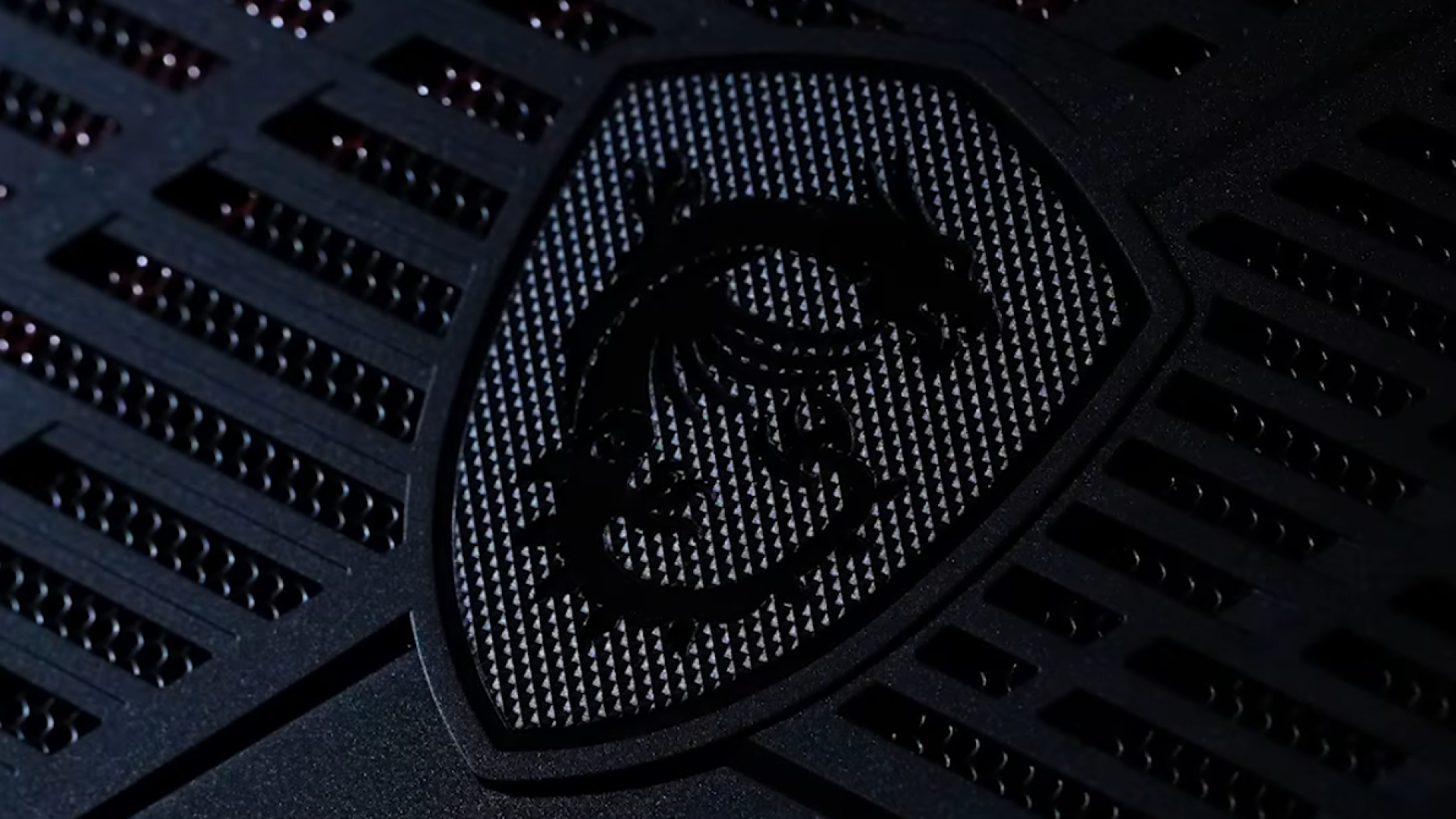MSI teases its first handheld gaming PC — and it may be powered by Intel (Update)
We'll learn more at CES 2024

MSI has posted a teaser video for its first-ever handheld gaming PC on its Instagram account. It claims that "a whole new breed of MSI dragon is coming" and shows the placement of two joysticks, as well as ventilation and what appears to be an MSI logo on the back of the device. The video suggests more details about this handheld PC will be shared at CES next week. At the moment, we can really only guess what exactly this device looks like inside and out, though a tweet from Intel gives us an idea of what's inside.
A post shared by MSI Gaming (@msigaming)
A photo posted by on
The joysticks appears appear to be in a similar position to the Asus ROG Ally, which borrows the offset placement from Microsoft's Xbox controllers. We can see them in the video surrounded by RGB lighting in otherwise complete darkness.
Handheld gaming PCs will be new territory for MSI, though the company has been making gaming laptops for many years now. Expanding into new markets isn't anything unusual for MSI though, which has recently gotten into high-end SSDs and routers. Getting into handheld gaming would get the company on par with many of its rivals, who have already launched their own handheld PCs.
We can probably expect MSI's upcoming handheld to run Windows 11, which Microsoft has lately tweaked to be more palatable for handheld PCs. However, since Windows 11 still doesn't really work well on just a controller, it's almost certain that MSI will have custom software running on its handheld, a solution that Asus and Lenovo also had to rely on.
Later in the day, Intel responded to a version of the teaser MSI posted on X (formerly Twitter) with three thinking face emojis, suggesting that perhaps Intel's Meteor Lake will be powering this handheld.

Intel getting a deal with one of the biggest brands in PC gaming for a new form factor would be a big deal and would break AMD's multi-year long monopoly on handheld gaming PCs. On the other hand, testing indicates that Meteor Lake is quite a bit less efficient at lower power limits, which could be a deal-breaker for handheld gaming PCs, which tend to operate at lower power.
Other Windows-powered gaming handhelds from major OEMs went with AMD's Ryzen Z1 Extreme chip, which is the APU that powers Asus's ROG Ally and Lenovo's Legion Go. The Z1 Extreme is based on AMD's Phoenix chip, and it's more or less identical to the Ryzen 7 7840U. The fastest handheld gaming PCs today use either the Z1 Extreme or the 7840U, both of which are a fair bit faster than the Van Gogh APU found inside the Steam Deck.
Get Tom's Hardware's best news and in-depth reviews, straight to your inbox.
Some smaller brands are moving up to AMD's. Hawk Point 8040 series APUs, though this wouldn't be substantially different than using a Phoenix-based chip. Hawk Point only boasts a higher clock speed on its NPU, which won't really impact gaming performance. Despite that, GPD is switching its handhelds to the Ryzen 7 8840U, presumably because it's an easy swap with the 7840U. Though, should MSI want a newer version of the Z1 Extreme based on Hawk Point, it's not clear if one will even come out since the Z1 Extreme notably has its NPU disabled.
It's unclear from this video what MSI might do to differentiate its offering from other handhelds outside of the possible choice of an Intel chip. The Lenovo Legion Go, for instance, had detachable controllers and a larger, higher resolution display than competitors. We'll have to wait until CES 2024 to learn more.
Update Jan. 4 at 4:35 p.m. ET with Intel's tweets.

Matthew Connatser is a freelancing writer for Tom's Hardware US. He writes articles about CPUs, GPUs, SSDs, and computers in general.
-
watzupken Good to have some competition in the handheld segment. However, I am not optimistic with Intel’s Meteor Lake even though the iGPU is much faster than the XE iGPU. The performance consistency as demonstrated by their ARC GPUs is not that good, even though it’s improving. And it also depends how the APU scale with limited power.Reply -
Forge64 I am absolutely loving watching OEM after OEM step up and demonstrate publicly that they simply do not understand why the Steam Deck is continuing to define the market segment. It isn't performance, the Deck has exactly the right amount of performance for the other specs. Everyone else is busy cramming a higher res or larger screen in, and then shoveling performance parts in to either overcome the overhead of Windows or power some high res screen, and then they get all confused why their battery life has suddenly gone to hell.Reply
"Powered by Intel" = we don't know why we can't compete with Deck and are changing arbitrary things to try to win.
"runs Windows 11" - You may not understand why your devices keep failing, but I do, and until you realize that Windows is a *problem* and not an *advantage*, you won't "win".
It's not even "Windows is always better" or "Linux is always better". It's not even "is always better for mobile gaming". When you're busy crushing a decent system down under 20W, *everything* matters. Valve has made a custom Linux distribution specifically aimed at hitting a ~20W system thermal envelope, and it's very good and getting better daily, and they've repeatedly said that they're open to anyone else partnering and using it, but all the OEMs still see "it runs Windows so Game Pass and no support costs" as their winning ticket. Meanwhile the Windows portables that are least bad are running a huge software layer *over* Windows to make controller and small screen viable, and that just makes the CPU/battery churn *worse*.
Get over yourself OEMs. Stop trying to reinvent the wheel. -
rluker5 Reply
You may have noticed that Arc does relatively poorly in high fps scenarios and seems to scale much better with increasing resolution and load. Arc has a weakness with some driver or architectural overhead per frame. This gets less apparent the lower the framerate is. IGPUs inherently don't do a lot of fps so they hide this weakness. IGPU performance should be more consistent because of this. But there will still be a few games like Starfield hat just don't do well on Arc.watzupken said:Good to have some competition in the handheld segment. However, I am not optimistic with Intel’s Meteor Lake even though the iGPU is much faster than the XE iGPU. The performance consistency as demonstrated by their ARC GPUs is not that good, even though it’s improving. And it also depends how the APU scale with limited power.
Also in the range of iGPU fps, Intel CPUs are highly tunable for efficiency even without any tuning software.
But the Arc Control software does have a one button efficiency tuning option - "endurance gaming": unfxJvgpuc8:1485View: https://youtu.be/unfxJvgpuc8?t=1485 , w_V1A6esYWIView: https://youtu.be/w_V1A6esYWI that would work for light gaming scenarios where people might care about power scaling.
I was interested in a handheld when they came out, but soon realized I would prefer a ~28w capable tablet instead. Or maybe a small laptop, like 12".